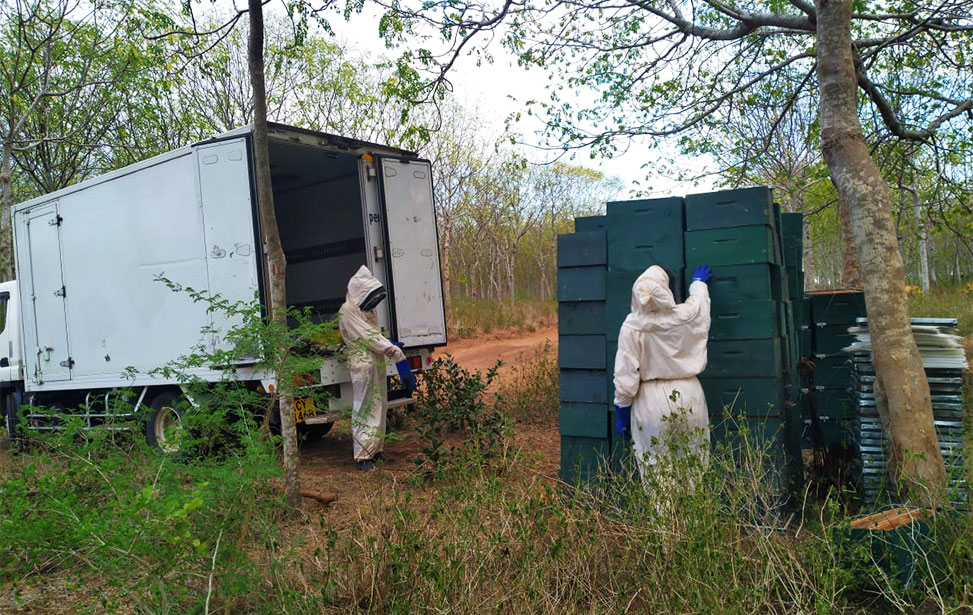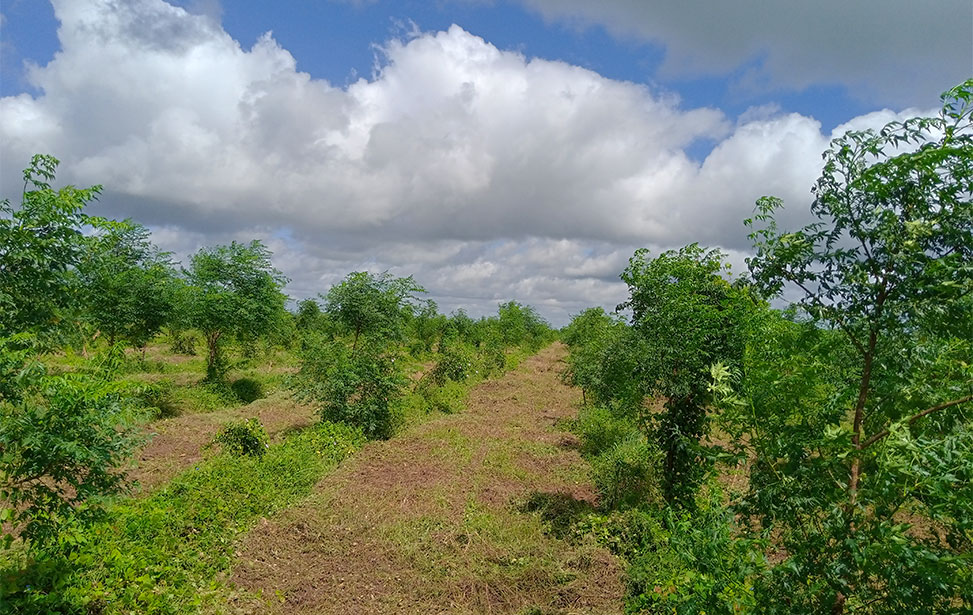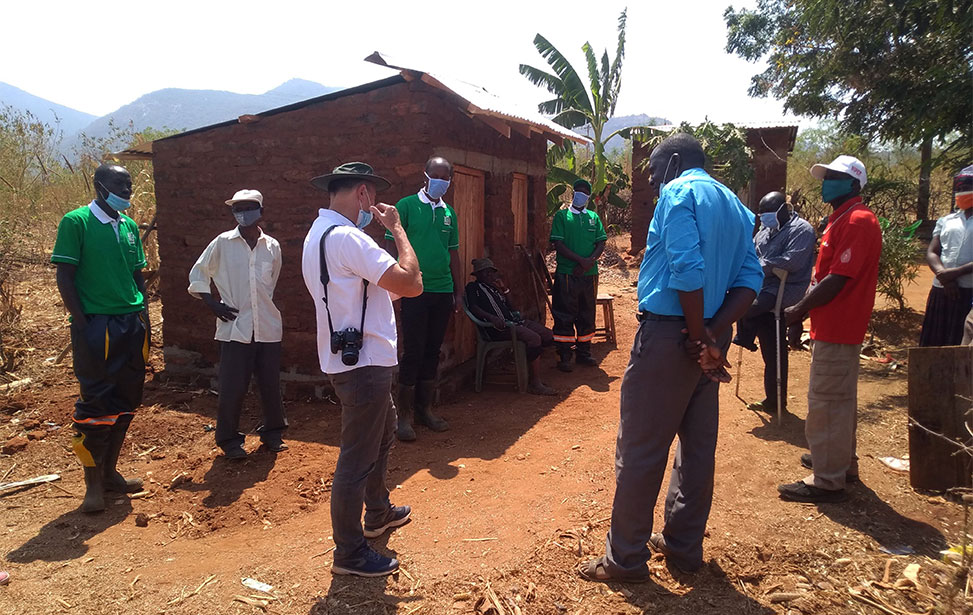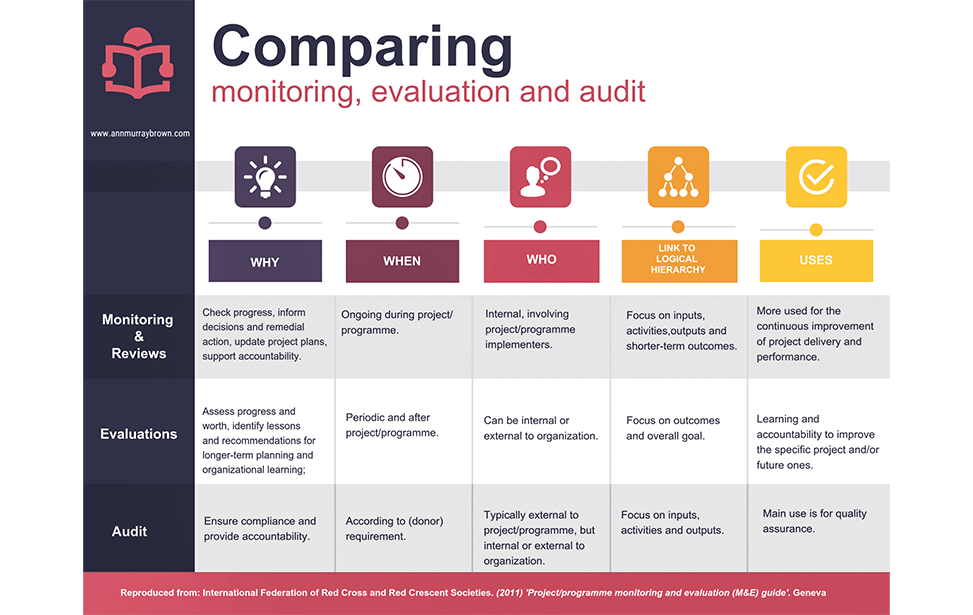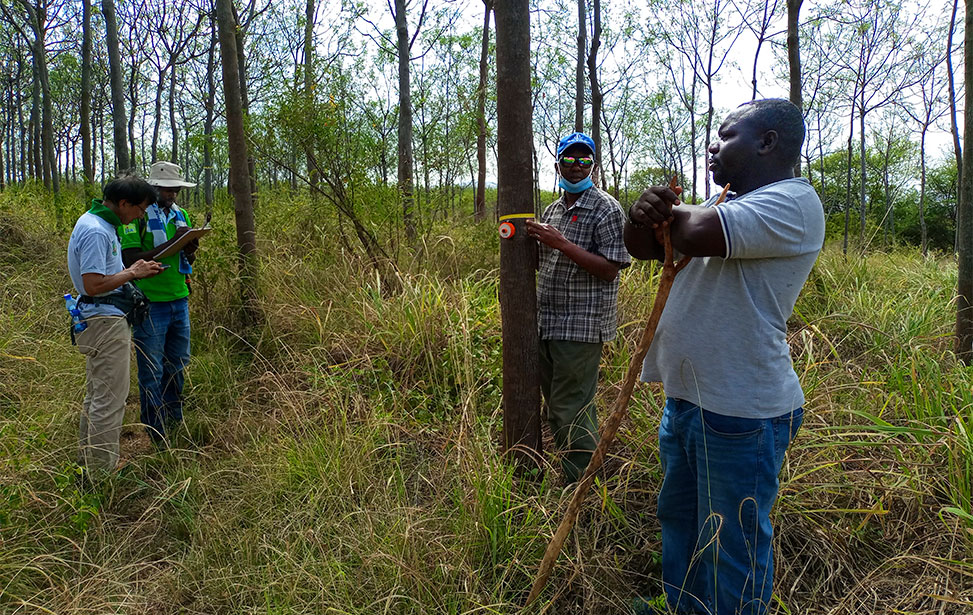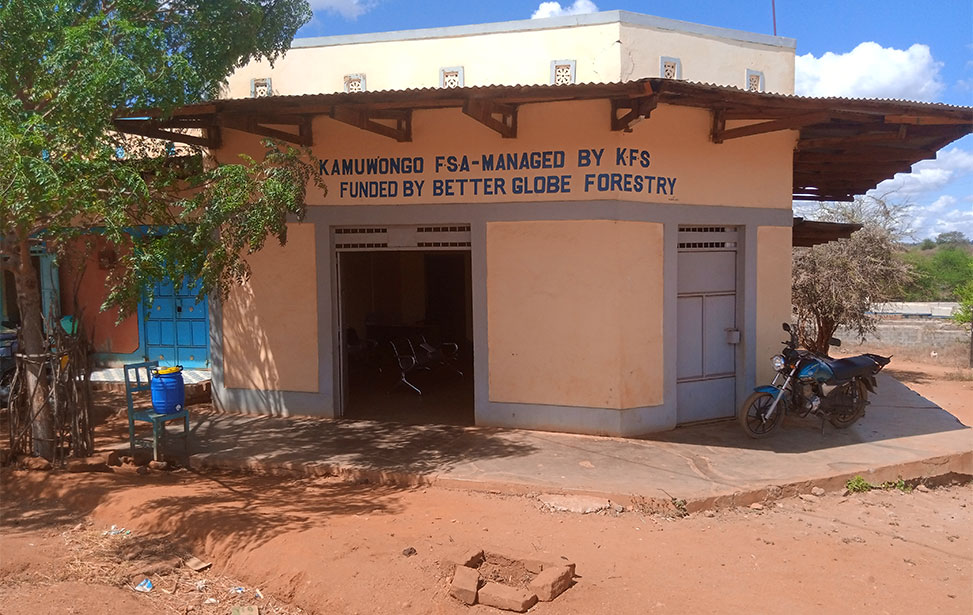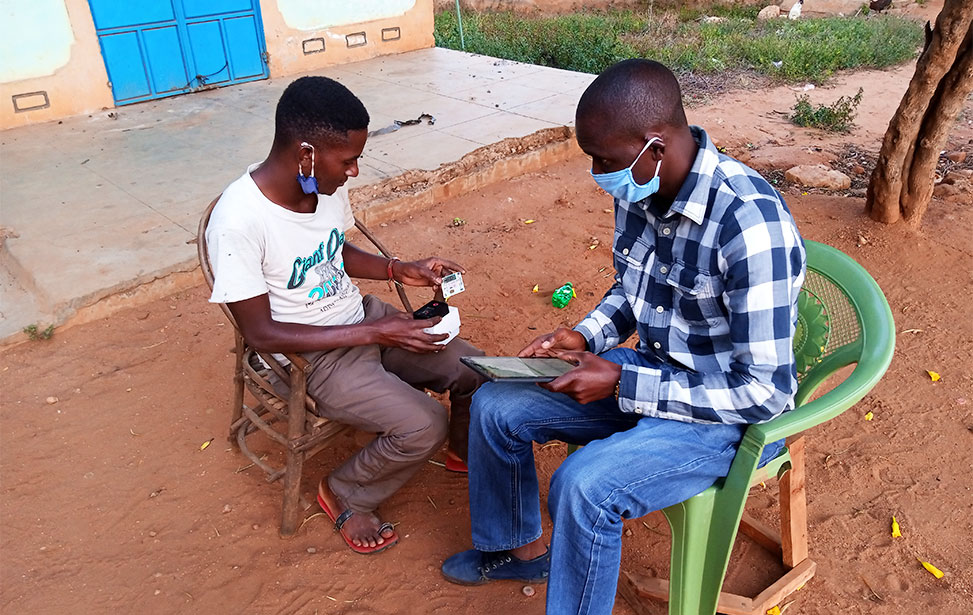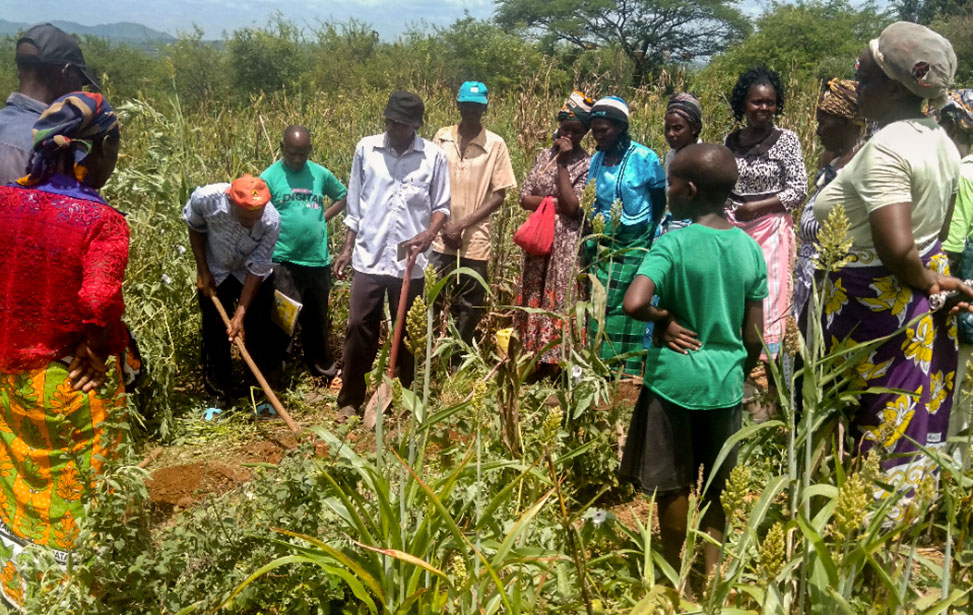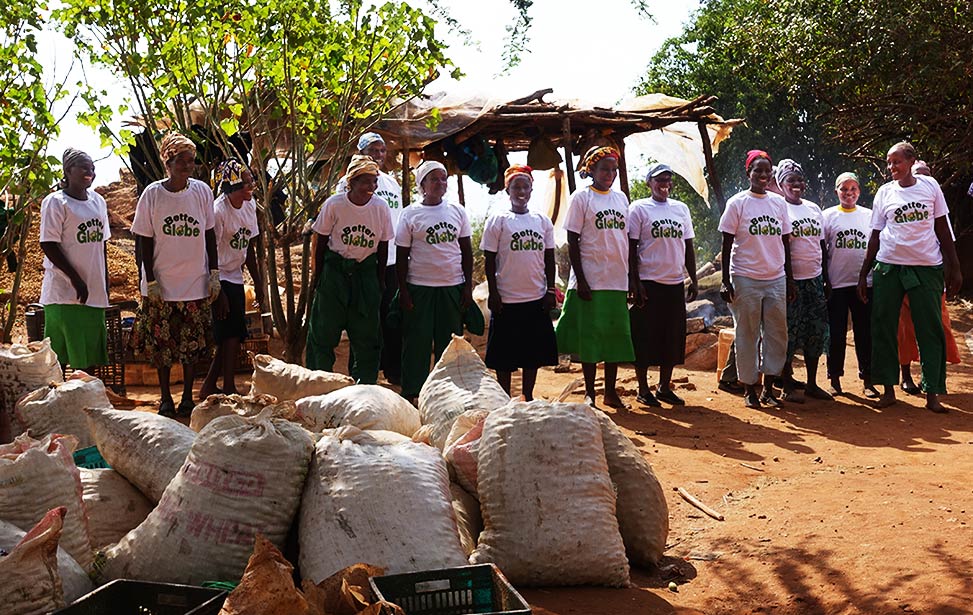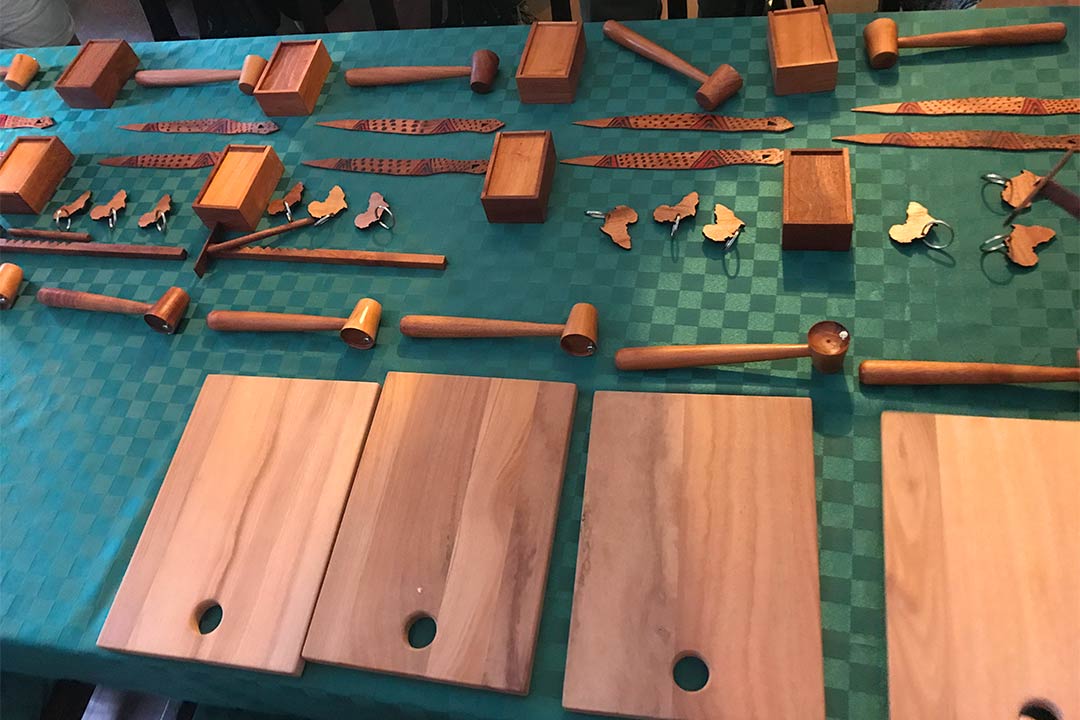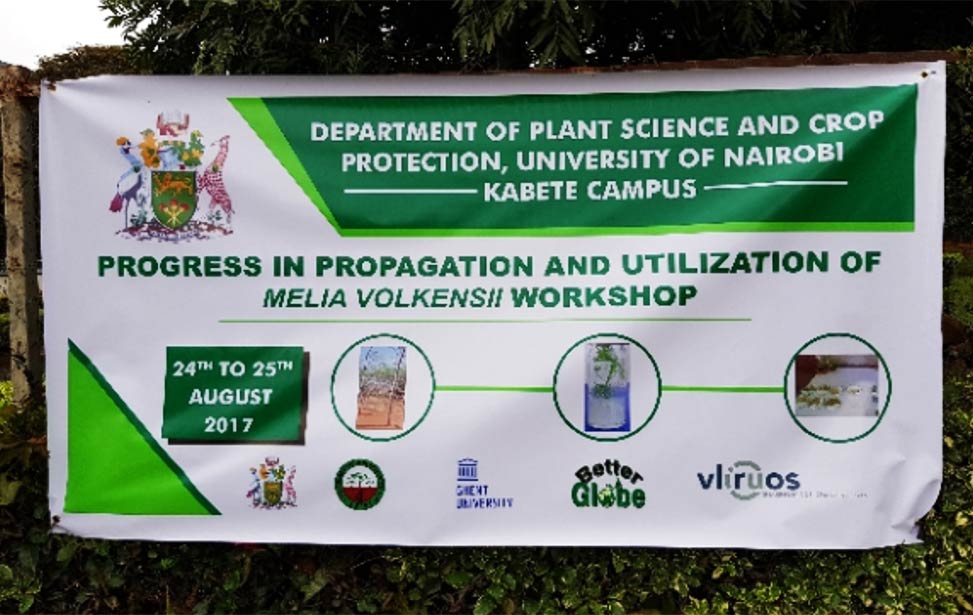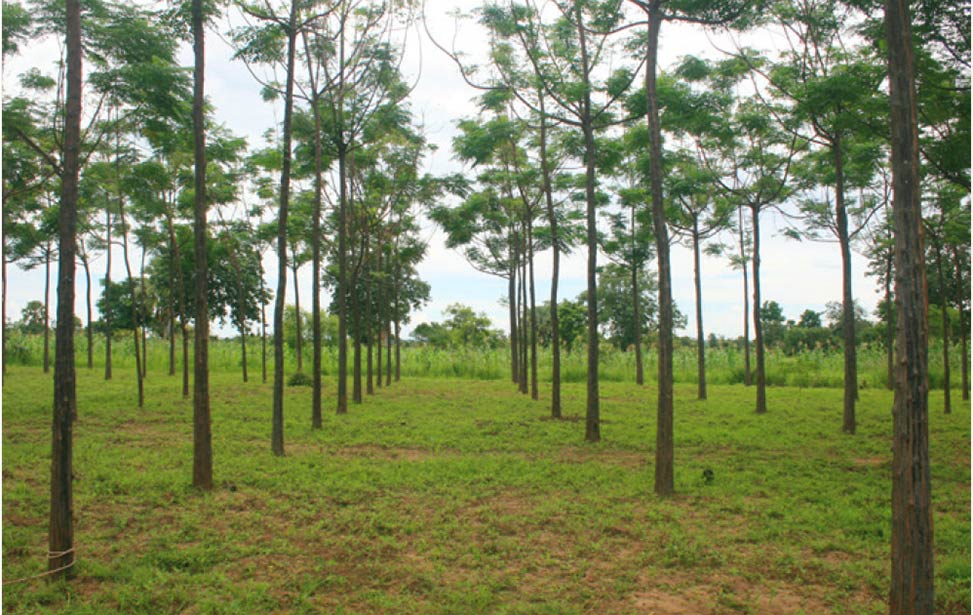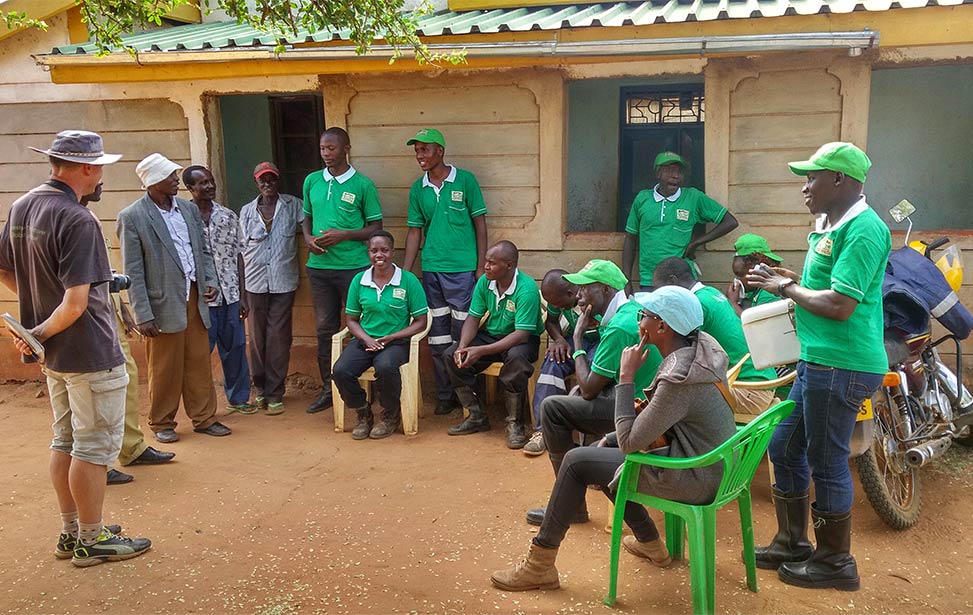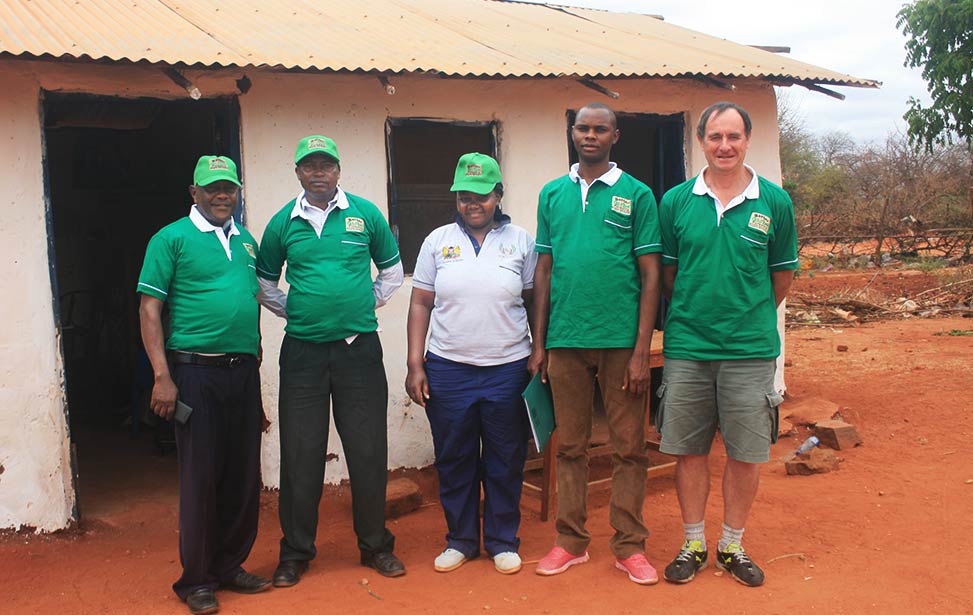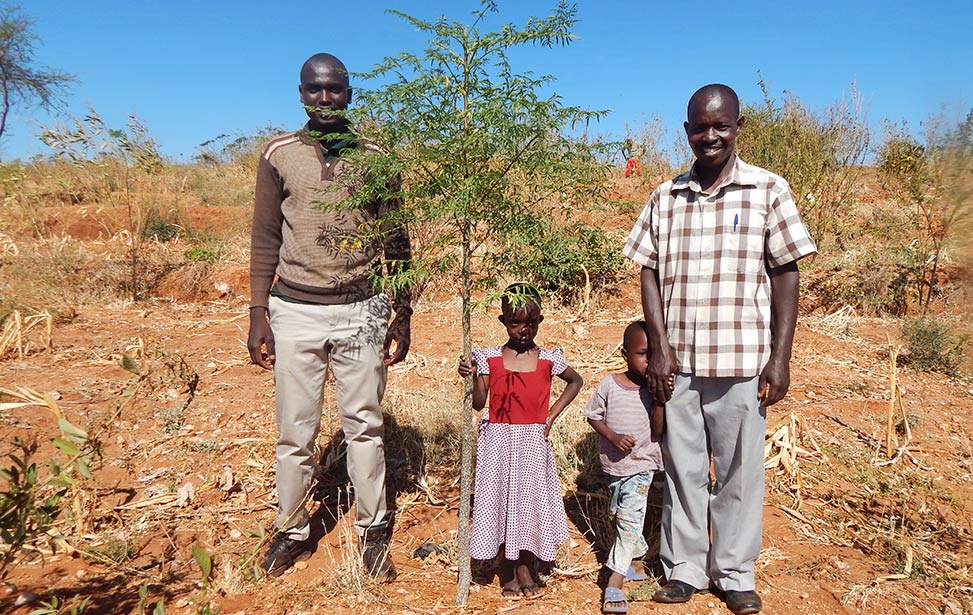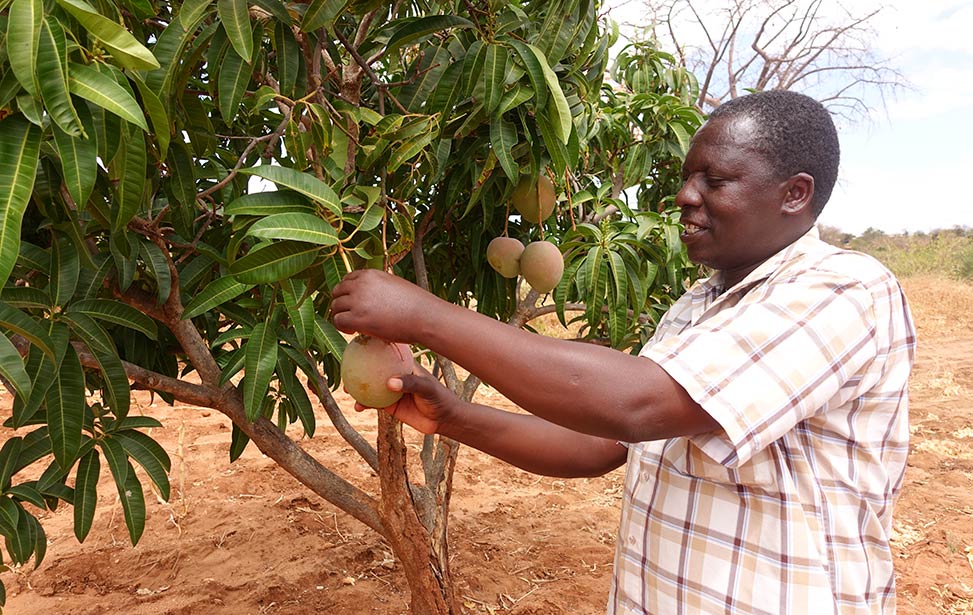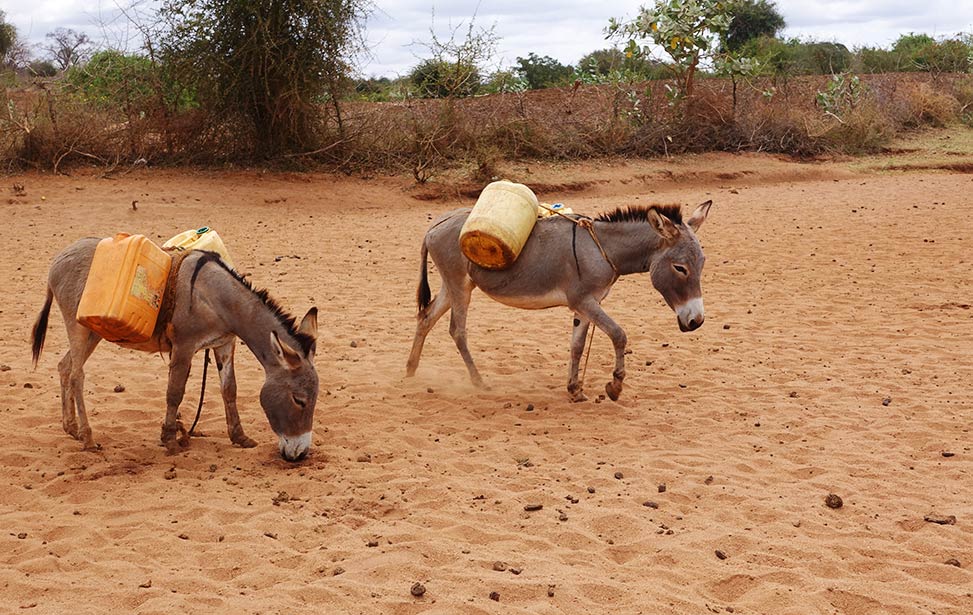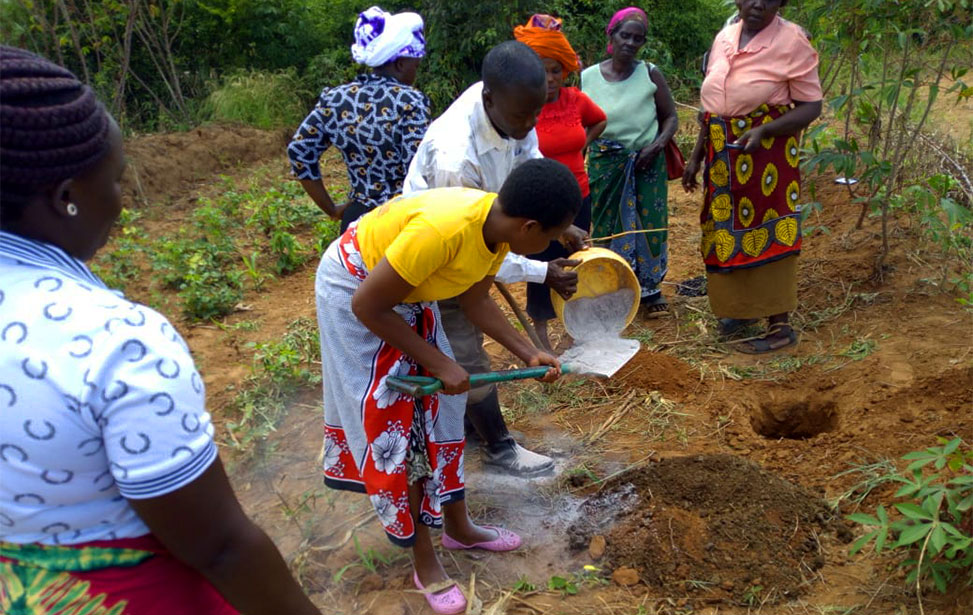
Kaliani mukau growers
Photo courtesy: Better Globe Forestry
Training for farmers
- Join Njenga, Gideon Kibusia, and Samuel Nakhone
Training for farmers are administered through farmer groups. Theses training practices are practical, and guided by work instructions and the Better Globe Forestry outgrowers training manual. The core trainings are focused on the following fields:
- Planting
- Soil and water conservation
- Pruning
- Farm protection/animal control
- Weeding
- Income generating activities (IGAS)
Planting
Farmers are trained on selecting the appropriate sites for planting trees, farm planning, spacing seedlings in an agroforestry system, staking and pitting, mixing of soil components, watering, and moisture catchments.
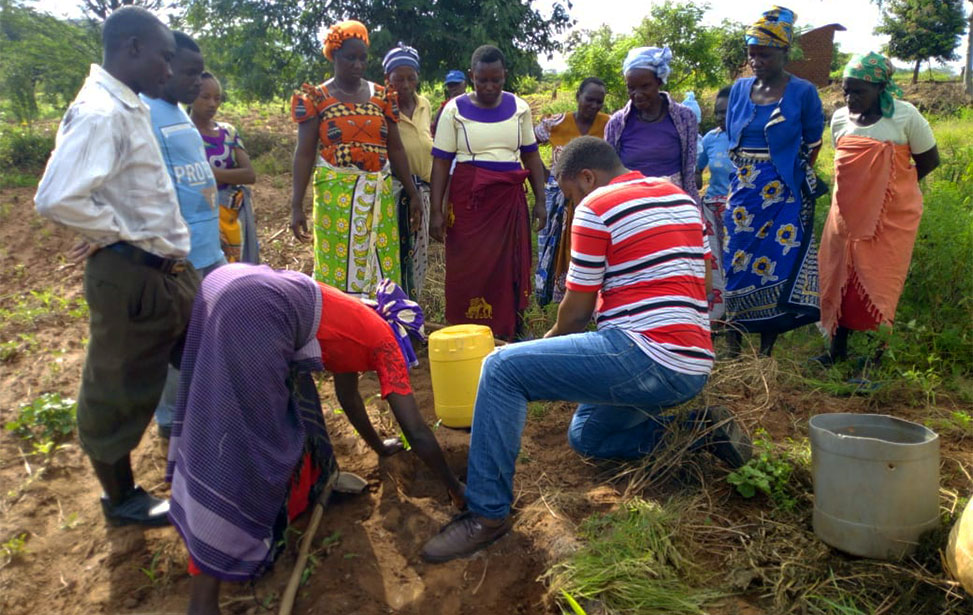
Wikituku farmers being trained on mukau planting techniques
Photo courtesy: Better Globe Forestry
Soil and water conservation
Water is a scarce commodity in ASALs (arid and semi-arid lands). As such, Agroforestry Agents (AAs) train farmers on various methods of soil and water conservation. This includes installing structures like terraces and retention ditches. These structures retain rainwater, hence providing adequate time for the rainwater to seep underground and provide adequate moisture for proper growth of food crops and trees. They also prevent soil erosion, therefore crop increasing yields and consequently improving livelihoods as envisaged in the Better Globe Forestry vision.
Pruning
Pruning techniques are planned for and executed according to schedules to obtain quality, knot-free timber at the end of the rotation period. With such timber comes higher returns. Being an extremely sensitive tree, Melia volkensii (mukau) requires a unique pruning methodology which is taught to our highly skilled AAs.
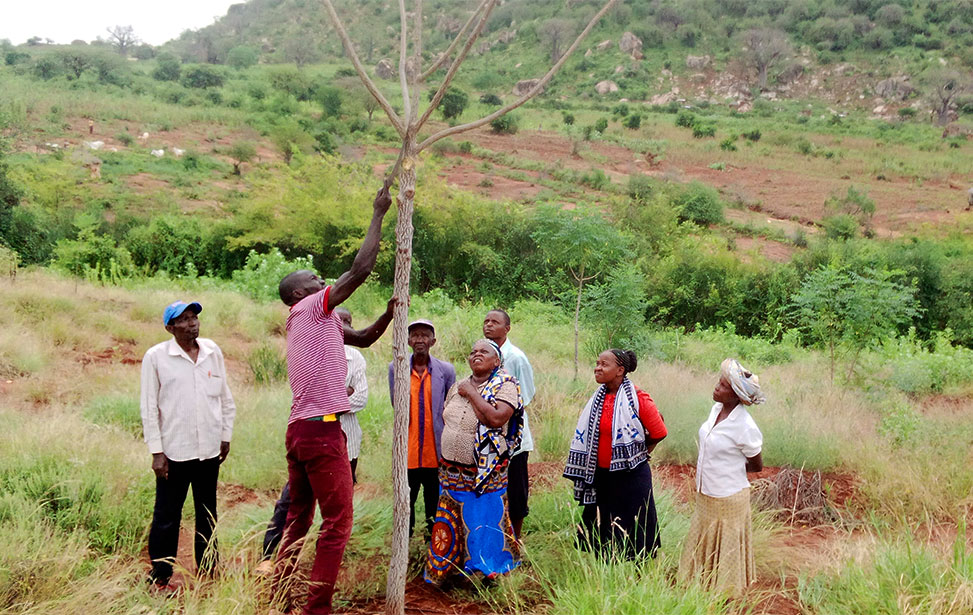
Katithini group members
Photo courtesy: Better Globe Forestry
Farm protection and animal control
Some information is disseminated to farmers on how to prevent entry and destruction of trees and food crops by livestock. Through adopting measures that are within their reach like social fencing, fencing of the farm by use of locally available material such as use of thorns, life fence and stern policy among others, they are able to prevent this issue from happening.
Weeding
Our system of planting trees with farmers is centered around agroforestry. Therefore, farmers are taught how to space crops to avoid the suffocation of mukau tree seedlings by climbers. They are also taught how to remove weeds which compete for moisture, space, and nutrients.
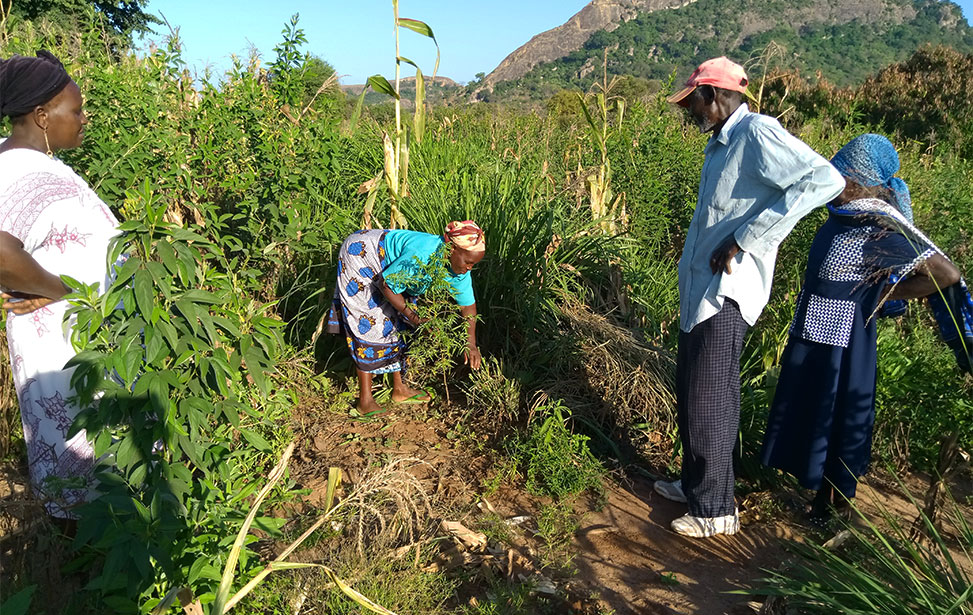
Yambyu mukau growers being trained on the importance of weeding mukau seedlings
Photo courtesy: Better Globe Forestry
Income-generating activities (IGAS)
Farmers have opportunity to learn various activities that they can participate in to generate some income and improve their livelihood, such as poultry keeping, beekeeping, pumpkin growing, tree nursery establishment, and goat rearing.
All these trainings are ultimately geared toward ensuring a farmer plants the trees and makes sure they all survive until the end of the rotation period. For this reason, a yearly training schedule for all farmers and activities is made, discussed, and approved for use before the beginning of each year. During implementation, there is continuous monitoring and evaluation (M&E) carried out by the M&E department.
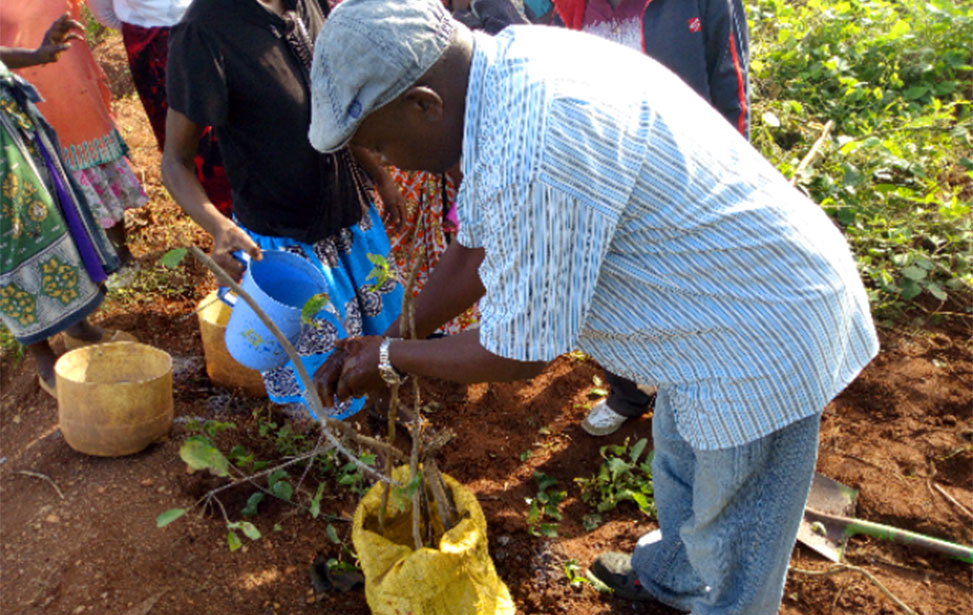
Wikituku mukau growers training for seedling protection through ring fencing
Photo courtesy: Better Globe Forestry

